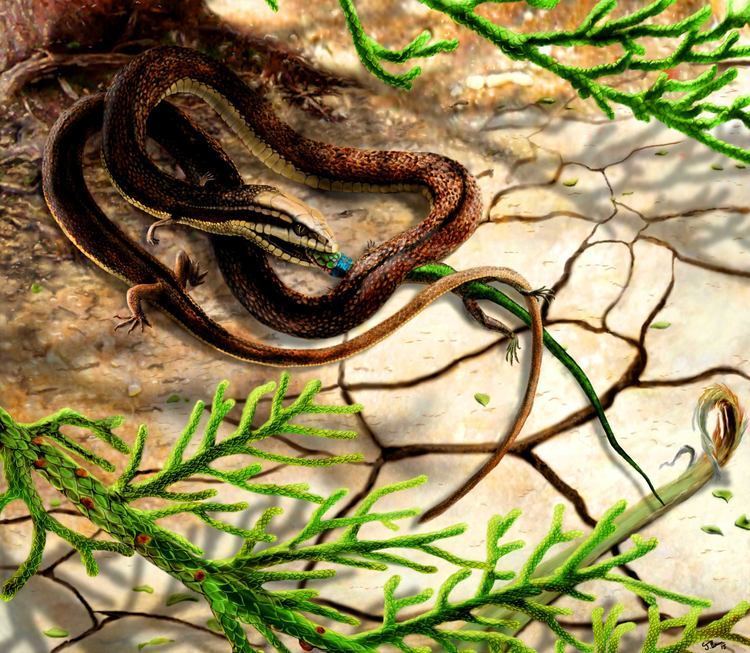Scientific name Tetrapodophis Rank Genus | Phylum Chordata | |
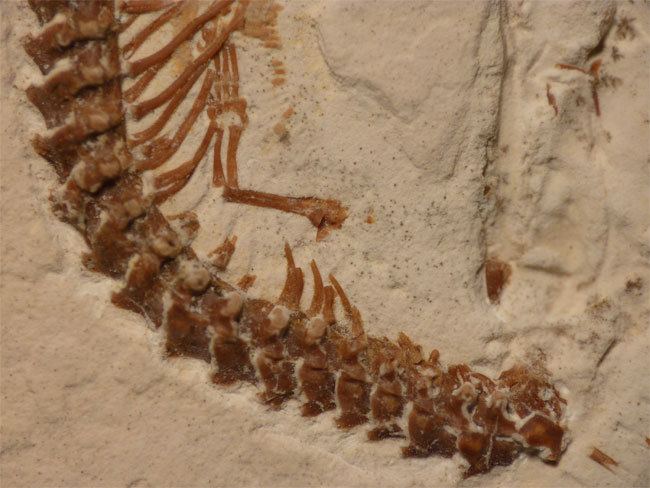 | ||
Similar | ||
Tetrapodophis amplectus a four legged snake from the early cretaceous of gondwana
Tetrapodophis (meaning "four-footed snake" in Greek) is an extinct genus of snake from the Early Cretaceous of Brazil. It is one of the oldest snakes and the only known snake with four legs. The type species, Tetrapodophis amplectus, was named in 2015 on the basis of a complete skeleton (BMMS BK 2-2) preserved on a limestone slab in the Bürgermeister Müller Museum in Solnhofen, Germany, which was labeled as "unknown fossil" until its importance was recognized by paleontologist David Martill. The specimen was later determined to come from the Early Cretaceous Crato Formation in Ceará, Brazil.
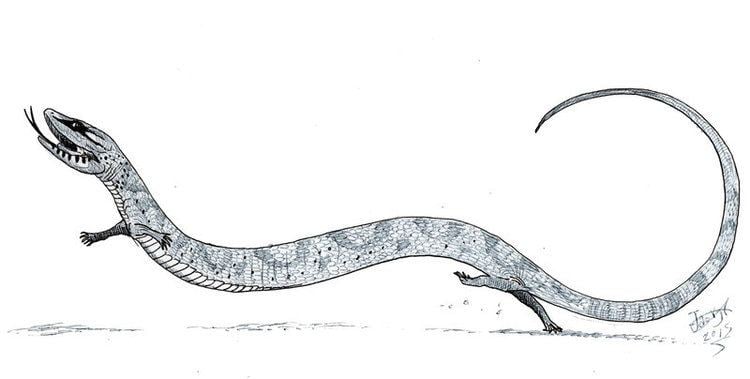
Tetrapodophis possesses small yet well-developed fore- and hindlimbs, a feature found in no other snake living or extinct. Nevertheless, it shares many characteristics with modern snakes, including an elongate body, short tail, broad belly scales, a skull with a short snout and long braincase, curved jaws, and sharp hooked teeth. BMMS BK 2-2 contains bones of another animal in its gut, indicating that Tetrapodophis was carnivorous like most other snakes. This suite of highly derived characteristics in Tetrapodophis indicates that the modern snake body plan evolved early in the group's history. Other features such as short neural spines suggest that Tetrapodophis was adapted to burrowing, lending support to the hypothesis that snakes evolved in terrestrial environments (another hypothesis posits that they evolved in aquatic environments). The high number of vertebrae (upwards of 150) in Tetrapodophis and other snakes is not seen in other burrowing reptiles with elongate bodies and reduced or absent limbs, meaning that it is most likely not an adaptation for a serpentine form of locomotion, and may instead be an adaptation for constricting prey, which is a behavior unique to snakes.
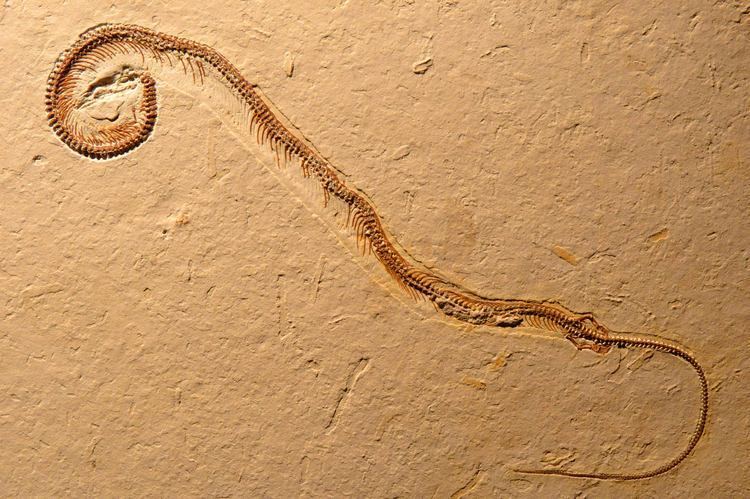
A phylogenetic analysis published alongside the original 2015 description of Tetrapodophis places it as a close relative of other early snakes such as Coniophis, Dinilysia, and Najash, but outside the crown group Serpentes, meaning that it branched off before the most recent common ancestor of all living snakes. Below is a cladogram from that analysis:
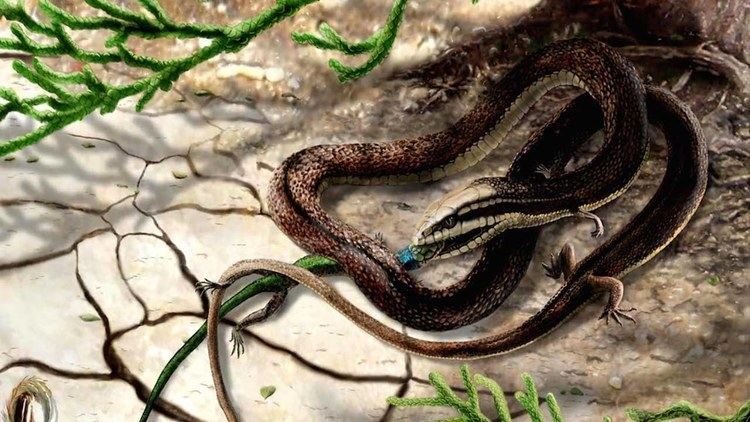
The interpretation of Tetrapodophis amplectus as an early snake and as an animal adapted to burrowing was challenged by Caldwell et al. (2016), who considered it more likely to be a dolichosaurid squamate.
